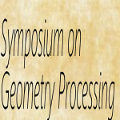We present a novel approach based on sparse Gaussian processes (SGPs) to address the sensor placement problem for monitoring spatially (or spatiotemporally) correlated phenomena such as temperature. Existing Gaussian process (GP) based sensor placement approaches use GPs to model the phenomena and subsequently optimize the sensor locations in a discretized representation of the environment. In our approach, we fit an SGP to randomly sampled unlabeled locations in the environment and show that the learned inducing points of the SGP inherently solve the sensor placement problem in continuous spaces. Using SGPs avoids discretizing the environment and reduces the computation cost from cubic to linear complexity. When restricted to a candidate set of sensor placement locations, we can use greedy sequential selection algorithms on the SGP's optimization bound to find good solutions. We also present an approach to efficiently map our continuous space solutions to discrete solution spaces using the assignment problem, which gives us discrete sensor placements optimized in unison. Moreover, we generalize our approach to model non-point sensors with an arbitrary field-of-view (FoV) shape using an efficient transformation technique. Finally, we leverage theoretical results from the SGP literature to bound the number of required sensors and the quality of the solution placements. Our experimental results on two real-world datasets show that our approaches generate solutions consistently on par with the prior state-of-the-art approach while being substantially faster. We also demonstrate our solution placements for non-point FoV sensors and a spatiotemporally correlated phenomenon on a scale that was previously infeasible.
翻译:我们提出了一种基于稀疏高斯进程的新颖方法,以解决空间(或短暂地)监测温度等相关现象的传感器定位问题; 现有的高斯进程(GP)传感器定位方法使用GP模型模拟该现象,随后在环境的分化代表性中优化传感器位置; 在我们的方法中,我们用SGP来随机抽样环境无标签地点,并表明SGP的学习引导点必然解决连续空间的传感器定位问题。 使用SGP可以避免环境离散,并将计算成本从立方到线性复杂; 现有的高斯进程(GP)传感器定位方法使用GP(GP)现有GP(GP)传感器定位方法使用GP模型模型的贪婪顺序选择算法来模拟该现象并随后在环境的分解中优化传感器位置。 我们用离散传感器随机的定位定位定位点定位方法(SGP)来模拟非点传感器(FoV),将计算成本的计算成本从立点到线性传感器。 最后,我们用精准的顺序的顺序测测测测测算方法将我们以前的定位数据结果用于前世界的传感器。</s>





